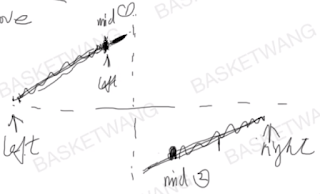47. Permutations II
Problem: Given a collection of numbers that might contain duplicates, return all possible unique permutations. Example: Input: [1,1,2] Output: [ [1,1,2], [1,2,1], [2,1,1] ] Analysis: 5/28/2018 Since each for loop the valid number might not start from index 0, if the nums[i - 1] has been used(the upper level), and nums[i] == nums[i -1], we can use nums[i]. --------------------------------- --------------------------------- --------------------------------- ---------------------- 1/23/2018 The numbers on the same level are not used, cuz the used mark will be removed after backtracking. So the used[i - 1] checks whether nums[i - 1] has been used at upper level. Solution: class Solution { public List< List< Integer > > permuteUnique ( int [] nums) { List< List< Integer > > res = new ArrayList<> (); if (nums == null || nums . length == 0 ) { return null; } Arrays . sort(nums);...




